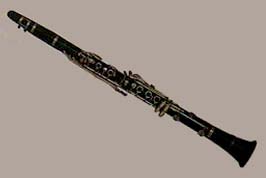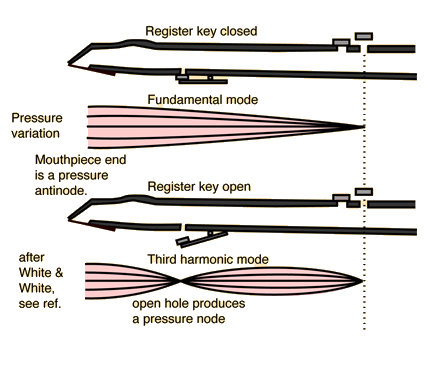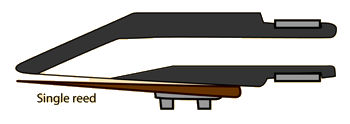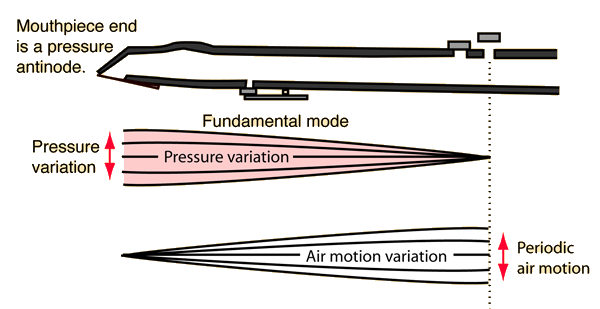The Clarinet
 |
The clarinet consists of a closed cylindrical air column with a bell-shaped opening at one end. It's mouthpiece holds a single reed, in contrast to the double reed of the oboe family. It is typically constructed of wood. The traditional wood is an ebony from Africa, Asia or South America commonly referred to as grenadilla wood. Hard and black, this wood is capable of taking a high polish. The instrument most commonly used today is known as the B-flat clarinet; the next most common is the clarinet in A. The B-flat clarinet is about 60 cm (23.6 in) long and has a range of more than three octaves.
|
Woodwind instruments
Musical instruments
Reference
Gibson
| HyperPhysics***** Sound | R Nave |


